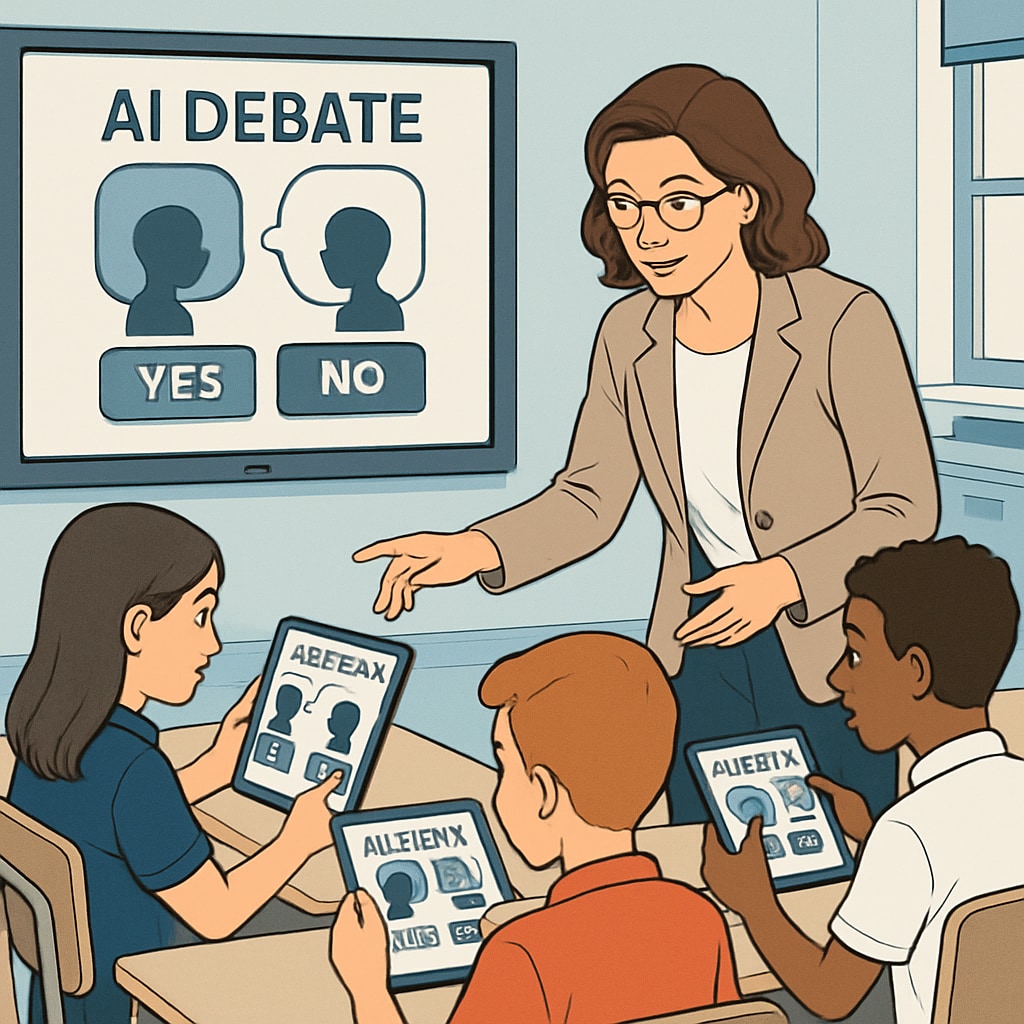In today’s digital era, “AI writing prompts, media literacy, and teaching resources” are increasingly vital for empowering students to navigate the flood of online information. Middle and high school educators face the challenge of equipping students in grades 9–12 with the critical skills needed to analyze, interpret, and create media content responsibly. Leveraging AI tools in the classroom can provide innovative solutions to address this challenge, fostering both media literacy and critical thinking among students.
How AI Tools Enhance Media Literacy for Students
Media literacy, defined as the ability to access, analyze, evaluate, and create media content, is a cornerstone skill in the 21st century. AI tools can play a transformative role in teaching these skills by offering tailored, interactive resources. For example, AI-driven platforms can analyze real-world news articles, enabling students to identify biases, misinformation, or logical fallacies. Additionally, AI writing prompts encourage students to adopt different perspectives, fostering empathy and understanding while honing their analytical abilities.
One effective approach involves incorporating role-based AI writing prompts into classroom activities. These prompts allow students to assume roles such as investigative journalists, social media analysts, or ethical content creators. By engaging with AI tools in simulated real-world scenarios, students gain hands-on experience in evaluating media critically and producing thoughtful content.

Fostering Critical Thinking with AI-Based Teaching Resources
Critical thinking—the ability to think clearly and rationally—is essential for navigating complex issues in both academic and everyday life. AI tools can support educators by providing dynamic teaching resources that challenge students to question assumptions, assess evidence, and draw well-reasoned conclusions.
For example, AI-powered applications can generate debates based on current events, encouraging students to explore opposing viewpoints and build strong arguments. Similarly, tools like AI essay evaluators can help students refine their reasoning and writing skills by providing real-time feedback on clarity, coherence, and logic.
- Interactive AI Tools: Platforms like GPT-based writing assistants can simulate critical discussions or generate counterarguments to deepen student engagement.
- Real-Life Case Studies: AI tools can curate case studies from reputable sources, allowing students to analyze real-world scenarios critically.
- Personalized Feedback: AI algorithms can tailor feedback to individual student needs, improving their critical thinking over time.

Practical Tips for Integrating AI into the Classroom
To successfully incorporate AI tools into teaching, educators should adopt a structured approach. Below are some strategies for seamless integration:
- Start Small: Begin by using simple AI tools like role-based writing prompts or AI content analyzers before scaling to more advanced applications.
- Focus on Collaboration: Encourage group projects where students use AI tools collectively to analyze media or solve problems.
- Maintain Ethical Awareness: Teach students to use AI responsibly, emphasizing privacy, bias detection, and ethical implications.
- Evaluate Impact: Regularly assess the effectiveness of AI-based activities through student feedback and performance metrics.
By strategically integrating AI tools, educators can create engaging and impactful lessons that prepare students for the challenges of the digital age.
Readability guidance: This article uses concise paragraphs, lists, and examples to ensure clarity and accessibility. The content is designed to be practical for educators while maintaining a professional tone.


